Sunday Poll: What Should Missouri Do To Solve MoDOT’s Funding Shortfall?

Today’s Sunday Poll question is about funding MoDOT:
The poll is open until 8pm, I’ll share my thoughts on Wednesday.
— Steve Patterson

Today’s Sunday Poll question is about funding MoDOT:
The poll is open until 8pm, I’ll share my thoughts on Wednesday.
— Steve Patterson
I recently received a very interesting new book: End of Automobile Dependence: How Cities are Moving Beyond Car-Based Planning by Peter Newman and Jeffrey Kenworthy. It’s always nice to hear that at least other cities are changing their planning practices away from old car-based models.
When looking at books I start with the table of contents:
And I look through the index to see covered topics.
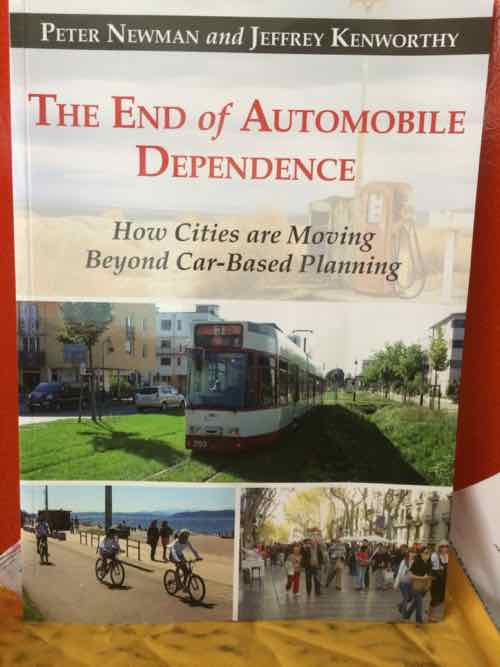
From publisher Island Press:
Cities will continue to accommodate the automobile, but when cities are built around them, the quality of human and natural life declines. Current trends show great promise for future urban mobility systems that enable freedom and connection, but not dependence. We are experiencing the phenomenon of peak car use in many global cities at the same time that urban rail is thriving, central cities are revitalizing, and suburban sprawl is reversing. Walking and cycling are growing in many cities, along with ubiquitous bike sharing schemes, which have contributed to new investment and vitality in central cities including Melbourne, Seattle, Chicago, and New York.
We are thus in a new era that has come much faster than global transportation experts Peter Newman and Jeffrey Kenworthy had predicted: the end of automobile dependence. In The End of Automobile Dependence, Newman and Kenworthy look at how we can accelerate a planning approach to designing urban environments that can function reliably and conveniently on alternative modes, with a refined and more civilized automobile playing a very much reduced and manageable role in urban transportation. The authors examine the rise and fall of automobile dependence using updated data on 44 global cities to better understand how to facilitate and guide cities to the most productive and sustainable outcomes.
This is the final volume in a trilogy by Newman and Kenworthy on automobile dependence (Cities and Automobile Dependence in 1989 and Sustainability and Cities: Overcoming Automobile Dependence in 1999). Like all good trilogies this one shows the rise of an empire, in this case that of the automobile, the peak of its power, and the decline of that empire.
I look forward to checking out the references to Bus Rapid Transit (BRT) and Light Rail Transit (LRT).
— Steve Patterson
I often post about accessibility problems, but today’s post is about a problem that’s finally getting addressed. The reconstruction of the DeBaliviere viaduct/bridge over MetroLink tracks is making great improvements to crossing Forest Park Parkway (map). Tuesday I saw the improvement on the newly-opened West side.
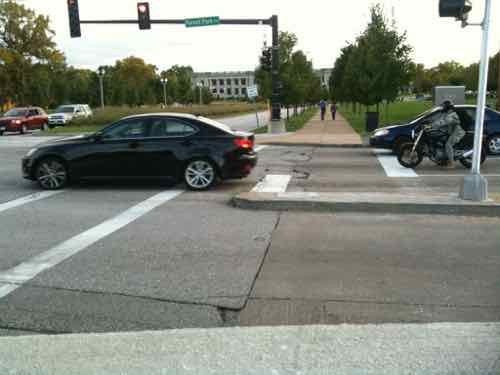
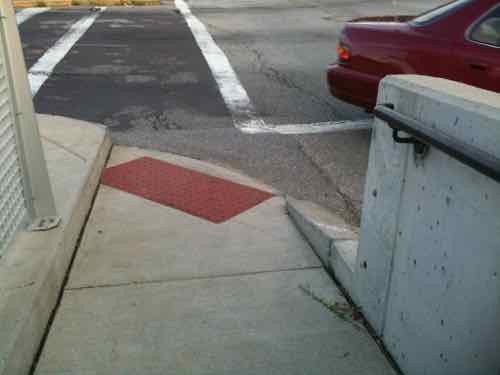
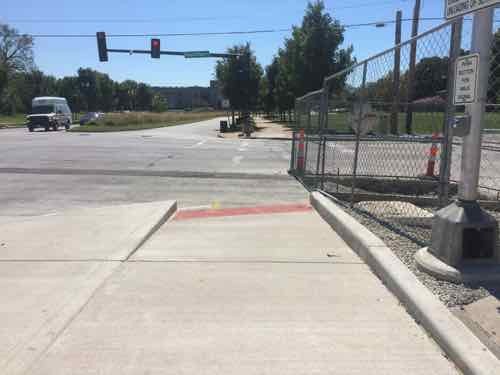
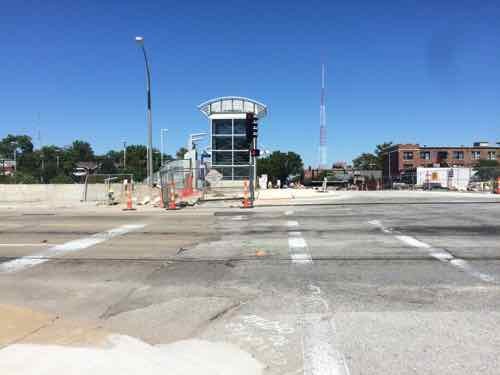
After the East side and the crosswalks are complete I’ll do another post. I’m just so thrilled at the ramp improvement!
Hopefully the pedestrian signal buttons, once activated, will be solely for the visually impaired to get audio signals about when to cross. Other pedestrians shouldn’t need to press a button to get a walk signal.
— Steve Patterson
Last weekend was the 10th anniversary of Katrina hitting the Gulf Coast:
Hurricane Katrina surprised disaster preparedness authorities when it made landfall 10 years ago, leveling entire communities and killing more than 1,800 people. The storm caused more than $100 billion in damage, making it the costliest natural disaster in U.S. history. But for all the damage the storm caused in New Orleans, Katrina was a relatively weak hurricane when it hit the city.
In the academic community, the unexpected disaster prompted climate scientists to consider the link between climate change and storms. Since then, research has shown that climate change will increase the devastation caused by hurricanes as sea levels rise due to global warming. Some research has also suggested that climate change has increased the intensity and frequency of storms. (Time: Why Climate Change Could Make Hurricane Impact Worse)
After watching video of the resulting destruction I knew I had to do something, but what? My solution was to buy a nearly-new Honda Metropolitan scooter, 49cc. I did so ten years ago today!
Most scooters get very high fuel economy, I regularly got between 80-95 mpg. Over the next 29 months I put about 5,000 miles on that scooter — driving all over the region. Eventually it allowed me to go car-free!
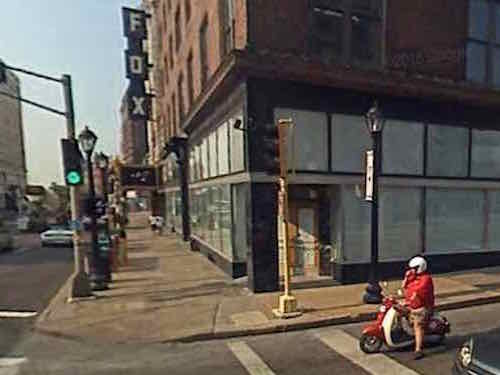
On February 1, 2008 my scooter days came to an end, 15+ hours of no help following a hemorrhagic stroke left me able to ride scooters or bicycles. I sold the scooter to a neighbor — he eventually got another with a larger engine. I also sold all my bicycles — except one.
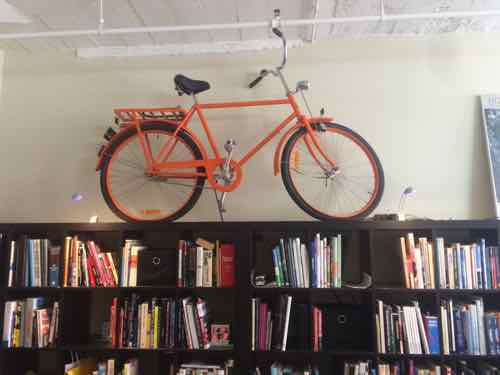
I have many fond memories of riding both the scooter and the orange bike. New poll on Sunday — have a great weekend!
— Steve Patterson
Last week I was near Manchester & Hampton doing research, I arrived & departed on the #32 (ML King-Chouteau) MetroBus. Arriving the bus was headed West on Manchester, so the stop was on the adjacent sidewalk. For the return trip I needed to catch the bus as it headed East on Manchester — no sidewalk on that side. But there is a just big enough concrete pad. I didn’t get a pic from across the street but you can see it on Google Street View here.
It took a while but I finally got a break in traffic where I could quickly cross Manchester to the stop I needed.
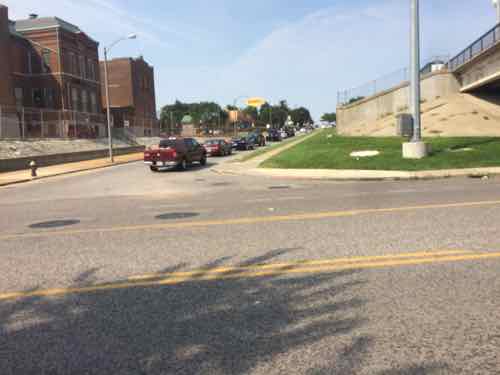
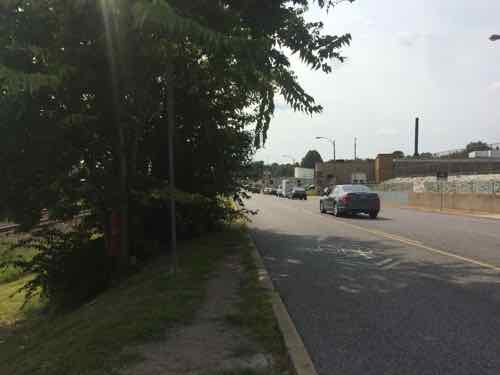
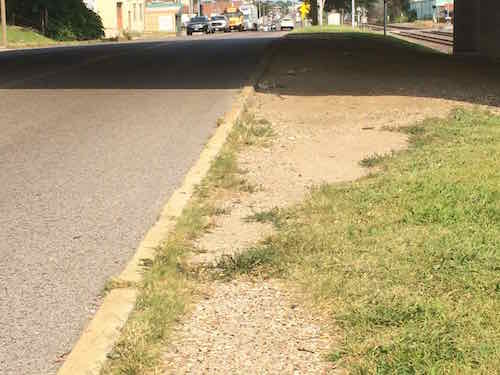
I was right at the edge waving as the bus approached. Another passenger got off at my stop so she stood close to my wheelchair on the small pad while the driver extended the lift so I could board. Would the driver have seen me if a passenger wasn’t wanting to exit at my stop?
I had wanted to go to the next stop to the East where I could cross at a crosswalk, but vegetation (upper left of last photo) blocked the sidewalk.
So who’s responsible?
All three are involved, but fragmentation means the pedestrian experience here sucks. The quick solution is to trim the vegetation in both directions. A crosswalk with warning signs for motorists to stop for pedestrians would be relatively cheap. I’m going to email Ald. Vollmer (10th) & Ald. Ogilvie (24th) to let them know about the issues here.
— Steve Patterson